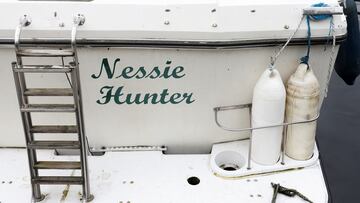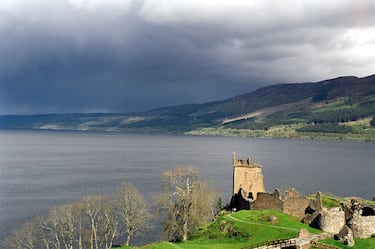Is the Loch Ness monster real? Researchers conduct the biggest search for Nessie in over 50 years
An investigation by the Loch Ness Center and Loch Ness Exploration embarks this weekend on the biggest search for the elusive ‘Nessie’ in 50 years.

Near Inverness, in the Scottish Highlands, there is a deep loch that needs no introduction. Within its waters, legend has it, inhabits one of the largest and most famous lake creatures, Nessie, The Loch Ness Monster. Along with the abominable snowman, the well-known Yeti, it is the most recognizable figure in cryptozoology. This pseudoscience, which seeks to prove the existence of extinct, mythological or folkloric animals, has never lost faith that one day it will emerge again.
On Saturday, the biggest scouring of the loch to search of him in the last fifty years began. Despite the flood of information at the beginning of the 20th century, including photographs, at a time when the King Kong premiere had unleashed a kind of ‘monstromania’ around the globe, there has been no documented proof of sightings even though the Official Loch Ness Monster Sightings Register lists over 1,100 alleged incidents. That it is hoped will change now with the latest technology at the service of researchers to reverse the weight of half a century without news of Nessie.
Hundreds of people and a legendary animal
Dragon. Sturgeon. Giant eel. Plesiosaur. The perhaps fictitious identity of Nessie is unknown; but, if it exists, it is above all elusive. And to break with this elusive quality, drones, infrared cameras and hydrophones, that capture underwater sounds, have been incorporated into the already extensive amount of equipment at the disposal of experts and curious people at the Loch Ness Center in Drumnadrochit. Together with the Loch Ness Exploration they will immerse themselves in a mystery that is lost in the mists of time.
The jewel in the crown for this occasion is a submersible, which will try to get closer to all the clues provided at the bottom of the lake. Accompanying this search will be the hundreds of volunteers who have already joined the project and who will remain on dry land with binoculars. Keep an eye out, in case the monster manifests itself through an almost Marian apparition.

This operation will last from the 26th to the 27th. Two days of intense exploration in situ that constitutes the first major investigation into the lacustrine beast since 1972, when the Office of Loch Ness Investigation undertook a similar endeavour. But this time it is different. At stake is not only the verification of its existence but also about inspiring and investing in the illusion of the future.
Related stories
“It’s our hope to inspire a new generation of Loch Ness enthusiasts and by joining this large scale surface watch, you’ll have a real opportunity to personally contribute towards this fascinating mystery that has captivated so many people from around the world,” Alan McKenna of Loch Ness Exploration told the BBC, who will navigate these two days in the black waters of the unknown. On the verge of being resolved, according to the general manager of the Loch Ness Center, Paul Nixon, who highlights the use of unprecedented technology for the campaign.
Enthusiasm around the creature was born in the 1930s. The manager of a hotel in the area, one Aldie Mackay, claimed to have seen something resembling a whale. That it was a beast. The local newspaper, the curious Inverness Courier, did the rest. The story went viral spreading across the country and around the globe. A legend was born. Who knows if this weekend it’ll become a reality.